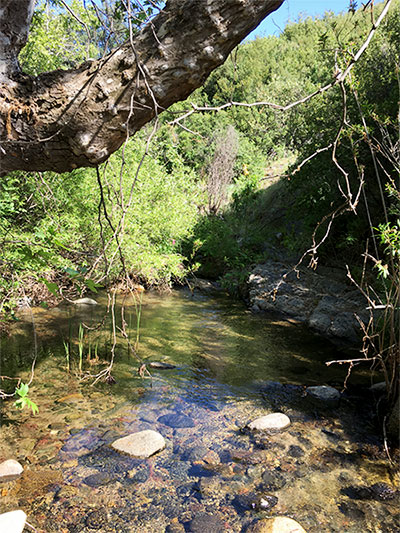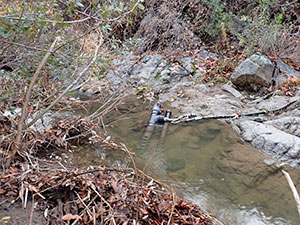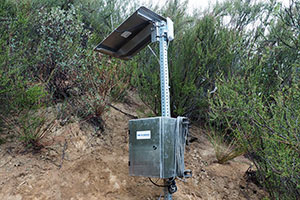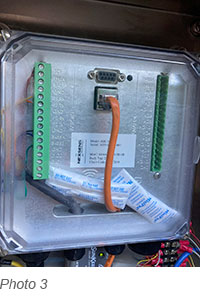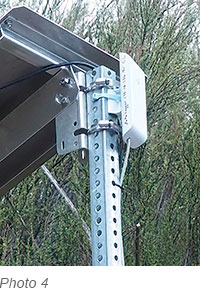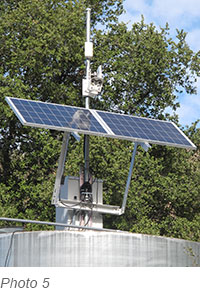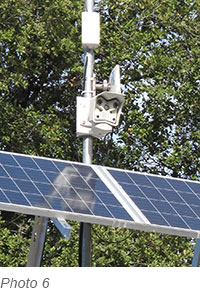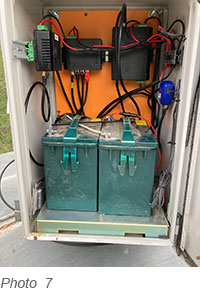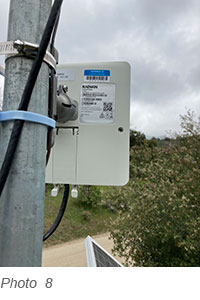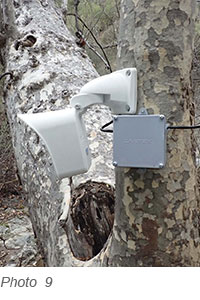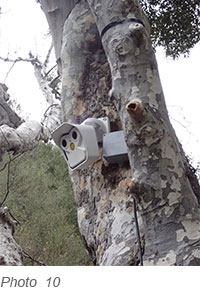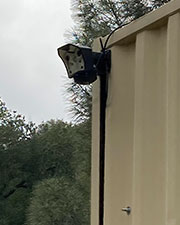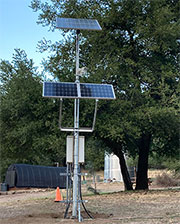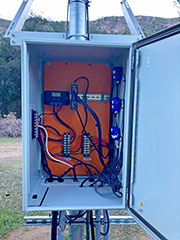San Diego River Park Foundation
Boulder Creek Preserve
Environmental Monitoring Research Program
March 15, 2022
By Robert Mazalewski and Martin Offenhauer
Senior Technical Advisors at the San Diego River Park Foundation
The San Diego River Park Foundation (SDRPF) was created in 2001 to educate the public on the value of the San Diego River watershed and its relationship to our environment. The Upper San Diego River Gorge and the areas that drain into it is, in many places, truly pristine wilderness that are largely within or next to the Cleveland National Forest. The River is a corridor for the movement of many wildlife species and has been considered by some experts as the most biologically diverse area in the entire country.
Boulder Creek Preserve (the Preserve) is a 13.11-acre wildlife Preserve located in the headwaters of the San Diego River watershed 12 miles north of Descanso, CA. Boulder Creek, a tributary to the San Diego River, runs through the property. The Preserve is comprised of mostly undeveloped land, including native riparian habitat along the creek and upland habitat on the adjacent hillsides. There is a dirt access entry road and small dirt parking area in the western portion of the Preserve, along with an old homestead foundation. It was known as Fisherman’s Camp, initially developed in the 1920’s.
The SDRPF acquired the 13.11 acres along Boulder Creek in 2012. SDRPF was contacted by a local fish conservation group about the recent findings of a small population of wild trout surviving in Boulder Creek and was seeking a partner to conserve the privately-owned land along the creek. The purpose of acquiring the portion of Boulder Creek and the surrounding area was also due to its history of use for collecting water quality data, including bioassessments. It provides a healthy stream baseline for the watershed. Since it considered a cold water stream, it is very helpful for making comparisons with warm water streams.
The Preserve has an existing 10,000 gallon water tank, a groundwater well, and the remains of a foundation of a small house. A small wooden building was built by volunteers to store tools and be used as an educational facility. In 2014, the SDRPF contracted with the San Diego County Water Authority through the Proposition 84 Round 2 Integrated Water Management Implementation Grant, to conduct the Sustaining Healthy Tributaries for the Upper San Diego River project (the project) at the Preserve. One of the components of the project was to develop a station monitoring and education program including field monitoring and water quality assessment capabilities. This component of the project involved the development and installation of an automated electronic water quality monitoring station in Boulder Creek connected to the internet.
The purpose was to be one of a series of water quality monitoring stations along the San Diego River from the headwaters to the lower river to assess potential changes in water quality along the river’s course. The SDRPF contracted with Dr. Trent Biggs of San Diego State University (SDSU) Department of Geography and his graduate students to design, create, and install the water quality monitoring system and make it operational. The water quality instruments at Boulder Creek, a YSI EXO-2 multiparameter sonde water quality probe and a Level Troll 500 in-situ water level monitor, were installed in a small pool in Boulder Creek that generally has water except in times of extreme drought (Photo 1). This location was chosen for its accessibility, and that it is an important water source for local wildlife while providing a healthy stream baseline for the watershed. The instruments are connected from the monitoring station pool via a solar powered data link (Photo 2) using a NextSens iSIC-V data logger (Photo 3) through a radio link using a Ubiquiti NanoStation LocoM2, 2.4 GHz radio (Photo 4) to a second Ubiquiti transceiver located on top of the 10,000 gallon water tank. The solar powered tank top station was installed to provide the radio link from the monitoring station to the internet via the High Performance Wireless Research and Education Network (HPWREN) (Photo 5). Camera 1 is also located on the antenna mast to provide an overview of the main area (Photo 6). The tank-top control box contains the system batteries, coax switches and power supply for Camera 1 and the link radios (Photo 7). From the tank, a radio link that connects to the HPWREN system on Cuyamaca Peak uses a Radwin 5 GHz radio link (Photo 8) to provide direct internet access to the real-time data being collected by the water quality probes. This data, along with that from other future stations, will be collected, displayed and made openly available for research at the River Center at Grant Park, an educational and research facility now under construction in Mission Valley. This facility will also have a water quality monitoring station in the River at Qualcomm Way.
Along with the water quality data, SDRPF wanted to be able to provide video monitoring of the Preserve and its wildlife. HPWREN initially provided three Mobotix M12 cameras that had been in use in the system and were being replaced. SDRPF volunteers Robert Mazalewski and Martin Offenhauer initially worked with Pablo Bryant of SDSU to locate and set up these cameras and connect them into the radio link to Mt. Cuyamaca. HPWREN later donated an additional two Mobotix M16 cameras to be used to monitor the instrument pond, Camera 4, (Photo 9) and Camera 5 (Photo 10) in a location approximately 100 feet downstream, referred to as the “riffle pool”, where mating California newts have been observed. Camera 2 (Photo 11) and Camera 3 (Photo 12) have views of the southwestern corner of the Preserve and of the gate and entrance road to the Preserve, respectively. Views from these cameras can be found online at the HPWREN website: /cameras/BoulderCreek.html.
Mr. Mazalewski and Mr. Offenhauer, with assistance from SDRPF staff and volunteers, installed a 30 foot tall aluminum mast near the center of the Preserve, near the groundwater well. This mast was used to mount two solar arrays and a control box for the camera system and Camera 3. On the top of the mast is a 100 watt solar array that powers a submersible pump in the groundwater well that automatically fills the on-site tank. The second 2-panel 12/24 VDC 160 watt array provides electricity for the power-over Ethernet (PoE) supplies. The mast network control box houses the PoEs for Cameras 2, 3, 4, and 5, a solar charge controller for the 24 volt four battery bank located in the wooden shed, and the camera cable switch that provides the camera signal to the tank-top transceiver (Photo 13).
All of the cameras are connected with shielded CAT 7 or CAT 8 network cable that is either in a trench underground or suspended through the trees with steel support cables. The cable from the network control box runs underground below the road to the south to connect to Cameras 4 and 5, and from the network control box to the tank top switch and transceiver.
With these cameras, and near-real time water quality data from Boulder Creek, with the connectivity provided by the HPWREN system, the SDRPF will be able to provide more educational and scientific resources to further the goal of protecting and enhancing of the San Diego River and the environments in the San Diego River Watershed.

